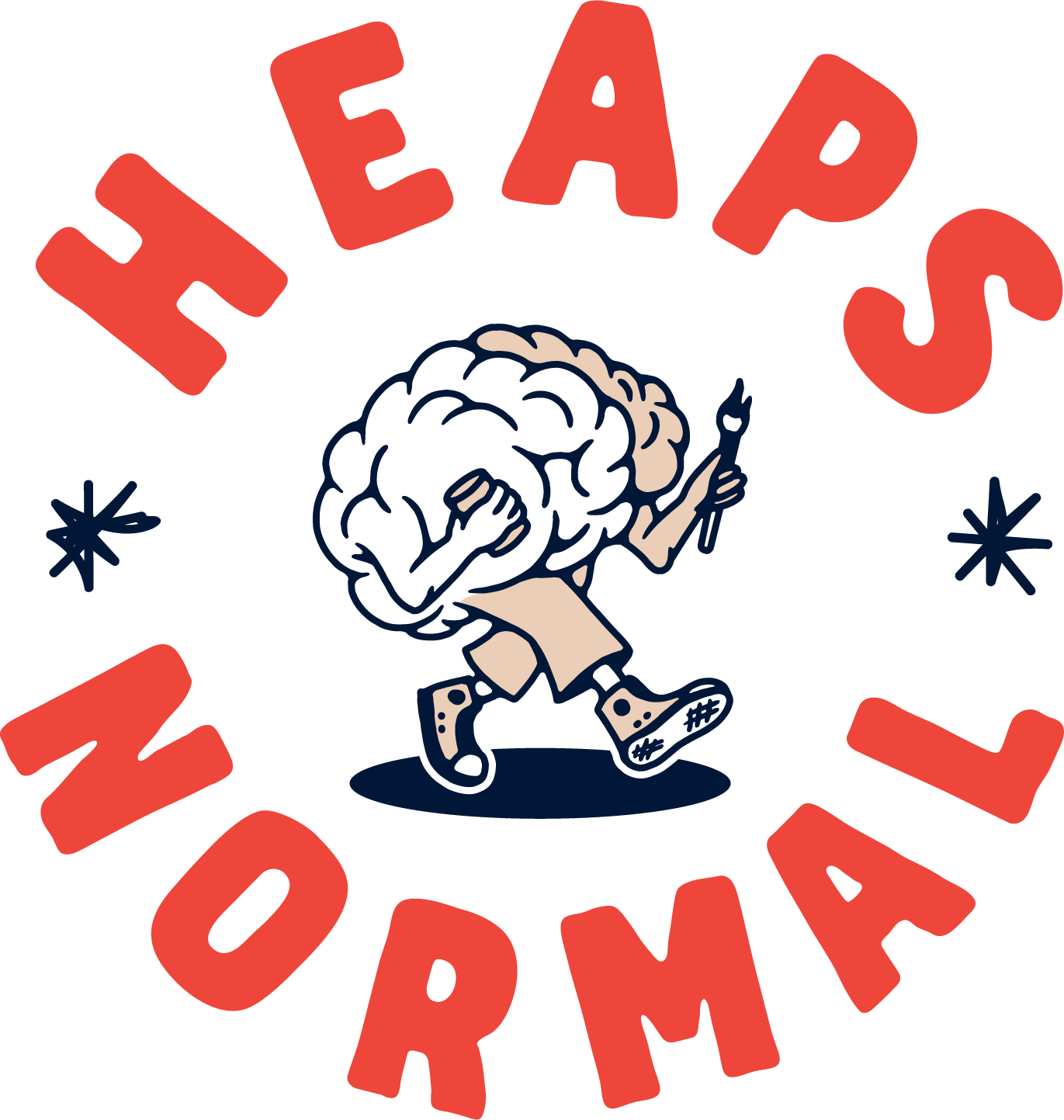MARGARITA KONTEV
Anonymous Sculpture
2024
❦
Caspar Connolly, Anonymous Tree
Gallery One, 01 June 2024 – 23 June 2024
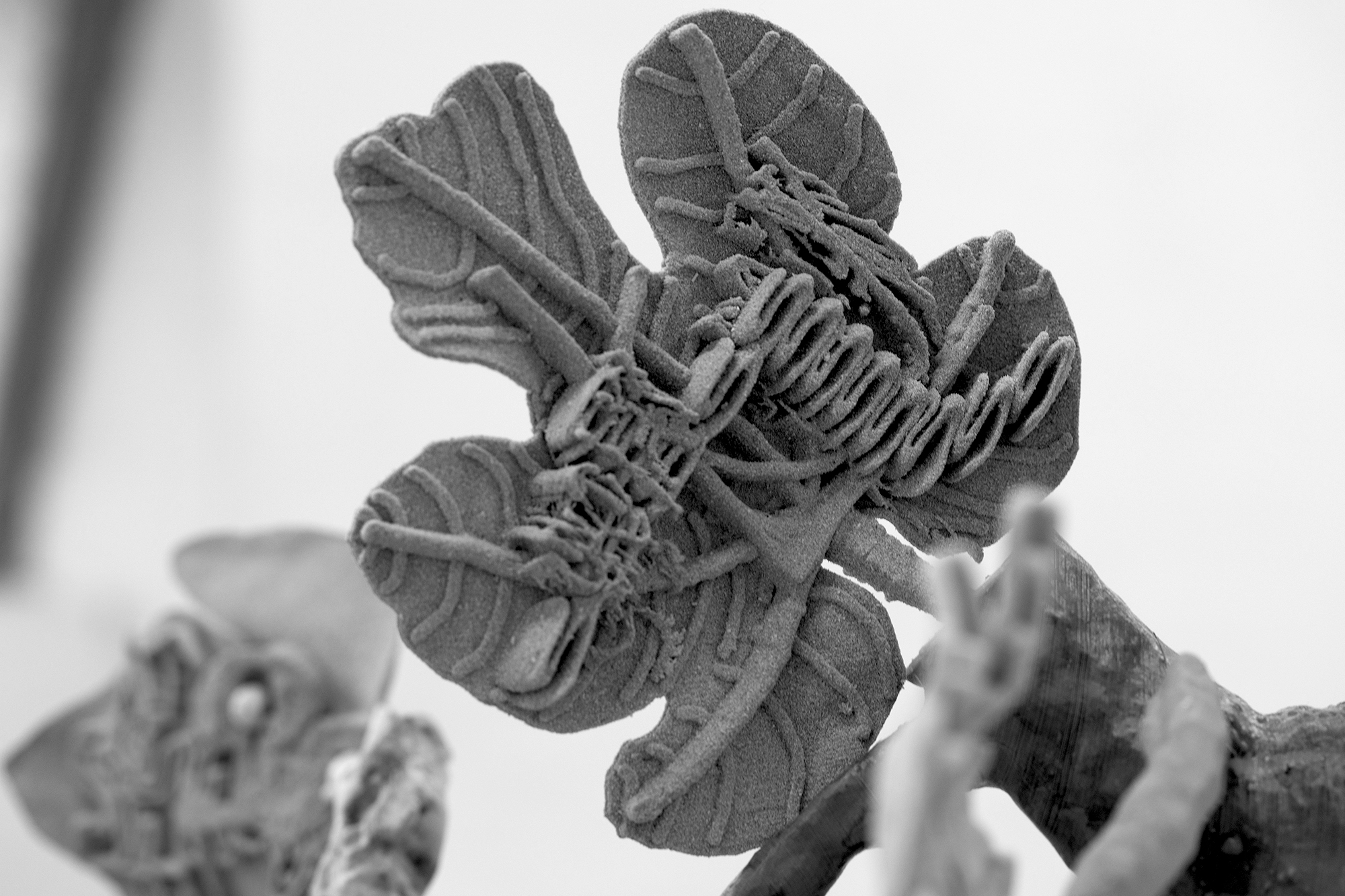
The simplicities of sculpture, as this work retells, can be traced back to the paragon in pictura poesis. These Latin phrases have long been used to argue the privileges of sculpture over poetry; that is, the fundamentals of seeing over listening. Embracing the long tradition of pictura poesis and its notion of ‘speaking statues’, as seen with works like Laocoön and His Sons, sculpture’s symphony is the distinct separation between the art of images and words. Object purity is hard to come across in contemporary sculpture, and, with the advent of found objects, a simple structure of imitation can get lost in translation. This leads me to believe that the blurred lines in Horace’s Ars Poetica, more specifically, the lines between object, sculpture, statue and artwork, get in the way of analysing three-dimensional works.
Although sculptures grow all around us, Caspar Connolly has isolated the association of the tree to the inside of TCB Gallery. Anonymous Tree consists of two sculptures on either end of Gallery One; the tree towards the opening of the room and a perched wasp tucked around the corner. Walking around the room, I find myself ducking under and around the protruding branches, protecting the delicate foliage from those with large bags and oblivious bodies. I stand up straight to observe the tree, which is taller and skinnier than me. On the other end of the room is a repurposed cardboard box with Caspar’s name sharpied onto the side. On top of the box is a maximised blue insect, which is quite innocent at first glance, with its long antennae perked up and letters stuck to the end of each leg. Walking over to it, I crouch down to the level of the work.
![]()
The practicality of this sculptural show is ambiguous. Not to say that it has to have a practical use, just that usually sculptural forms insinuate some form of operation other than the notion of replica. Conceptual artists such as Giseuppe Penone, Petr Štembera and Andre Cadere have previously expanded on the use of trees beyond their functions and focused solely on their form, just as Caspar has done in the first sculpture. This, in a way, presents a purer form of sculpting, one that simply admires the stability of a structure instead of its purposes or promises. Herein lies the importance of rootage, something that evolution has perfected and what has allowed the tallest trees in the Rockefeller Forest to grow. Growing under TCB’s floor, throughout the Bunnings carpark and onto Sydney Road are branches of science and family histories. Concealed under a brown perspex box, the tree’s roots are a proliferation of ideas. Just like this object’s foundations, a human being is rooted through their genuine, active, and natural involvement in the cherished traditions of the past.
![]()
Under the fluorescent gallery lights, the chlorophyll of each leaf has been drained to reveal a crusty truth. Encrypted on each leaf are the overlapping histories of time and place, brand logos, numbers, scribbles and pictures, pulled and pushed as if distortion is the only way to conceal their secrets. Their round edges suggest that these are variations of fig leaves, deformed to breed a new species of fig, one that is altered by its placement in the gallery. Pale pink, beige and grey leaves click into place at the end of each branch. Some face towards me, while others are turned up and curled down. A few leaves rest on the floor, shedding in time for Melbourne’s winter. After examining one leaf in particular, I realise I cannot decode the objects, as Caspar has constructed a language through which to read the work as a whole. Enlaced with voyages into family history, the ode is the most vital part in Anonymous Tree. Prioritising subtle homages over representation is key to understanding what the show wants to tell us. This brings us back to the myths and legends surrounding sculpture in ancient Greece. As Wincklemann believes, “connoisseurs and imitators find not only nature at its most beautiful but also something beyond nature, namely certain ideal forms of its beauty, which… come from images created by the mind alone.” With works such as Bernini’s Apollo and Daphne (1622-1625), the interpretation of Ovid’s Metamorphoses in which Daphne turns into a laurel tree is gracefully captured by Bernini mid-movement. With the changing of seasons, Caspar’s work also transforms to reveal the skeletal underlay of trees.
❦❦❦
Anonymous Tree reminds me of the primal use of human hands. While Caspar has previously used sand casting to create moulds and bake forms, the introduction of 3D modelling and printing allowed him to extend his primal sculpting fingers to the inside of the computer screen. The gritted coating on each leaf mimics half buried archaeological digs, warped and melted overtime after centuries of hot and cold changes. Concealed underground, Caspar resurfaces these antiquities to decorate the tree. He then decorates the decorations themselves, glueing shiny jewels and trinkets onto the sandy leaves. The trunk is constructed out of stacked logs, each one harbouring its own story. Erected proudly, every blocked section of the trunk is dipped in an image, with some resembling bark and others fabricated patterns, again designed to ornate the tree. These multilayered skins are formulaic to Caspar’s language - they are reproducible, same as the 3D models - but the precarious restrictions of sand casting reveal the unique ways an object can manifest.
This tree is one addition to a long lasting practice of Caspar’s, where he considers his position in the world, in his family, across the seas and locally. Anonymous Tree represents a timestamp of process-
based sculpture, practised socially. There is a strong inclination towards the noble grandeur of this upright shape, and most importantly, the inconclusive findings of the tree's markings. Anonymity, as the title proposes, touches on the mode of concealment and variations of texture throughout this show. The choice of textual permanence, just like object permanence and the feeling of something that isn’t present, is used to focus on the form of the tree. The muscle memory of a root system encapsulates the simple traditions of sculpture. With my face lost in the canopy, I experience crown shyness amongst Anonymous Tree.
Although sculptures grow all around us, Caspar Connolly has isolated the association of the tree to the inside of TCB Gallery. Anonymous Tree consists of two sculptures on either end of Gallery One; the tree towards the opening of the room and a perched wasp tucked around the corner. Walking around the room, I find myself ducking under and around the protruding branches, protecting the delicate foliage from those with large bags and oblivious bodies. I stand up straight to observe the tree, which is taller and skinnier than me. On the other end of the room is a repurposed cardboard box with Caspar’s name sharpied onto the side. On top of the box is a maximised blue insect, which is quite innocent at first glance, with its long antennae perked up and letters stuck to the end of each leg. Walking over to it, I crouch down to the level of the work.
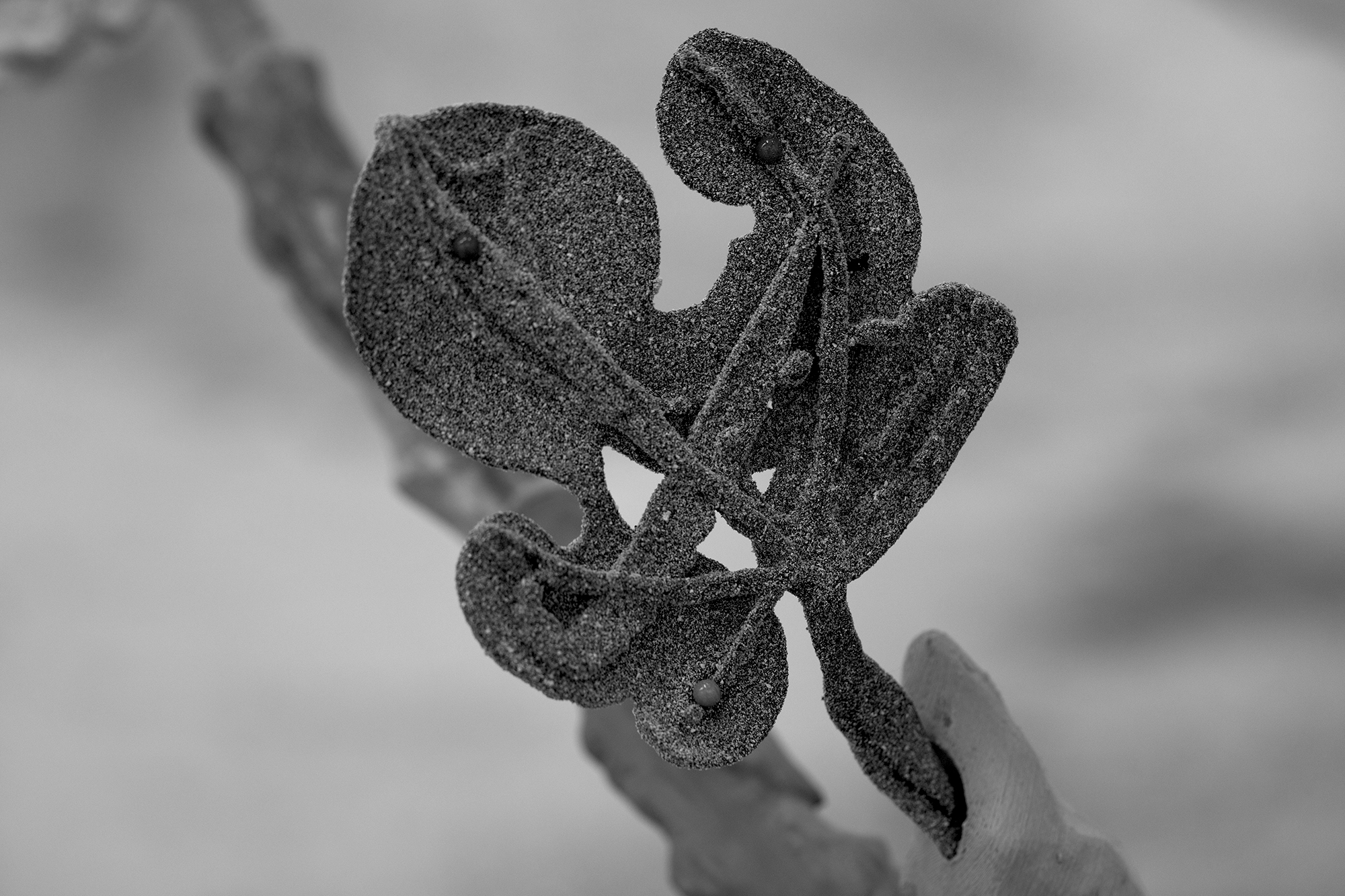
The practicality of this sculptural show is ambiguous. Not to say that it has to have a practical use, just that usually sculptural forms insinuate some form of operation other than the notion of replica. Conceptual artists such as Giseuppe Penone, Petr Štembera and Andre Cadere have previously expanded on the use of trees beyond their functions and focused solely on their form, just as Caspar has done in the first sculpture. This, in a way, presents a purer form of sculpting, one that simply admires the stability of a structure instead of its purposes or promises. Herein lies the importance of rootage, something that evolution has perfected and what has allowed the tallest trees in the Rockefeller Forest to grow. Growing under TCB’s floor, throughout the Bunnings carpark and onto Sydney Road are branches of science and family histories. Concealed under a brown perspex box, the tree’s roots are a proliferation of ideas. Just like this object’s foundations, a human being is rooted through their genuine, active, and natural involvement in the cherished traditions of the past.
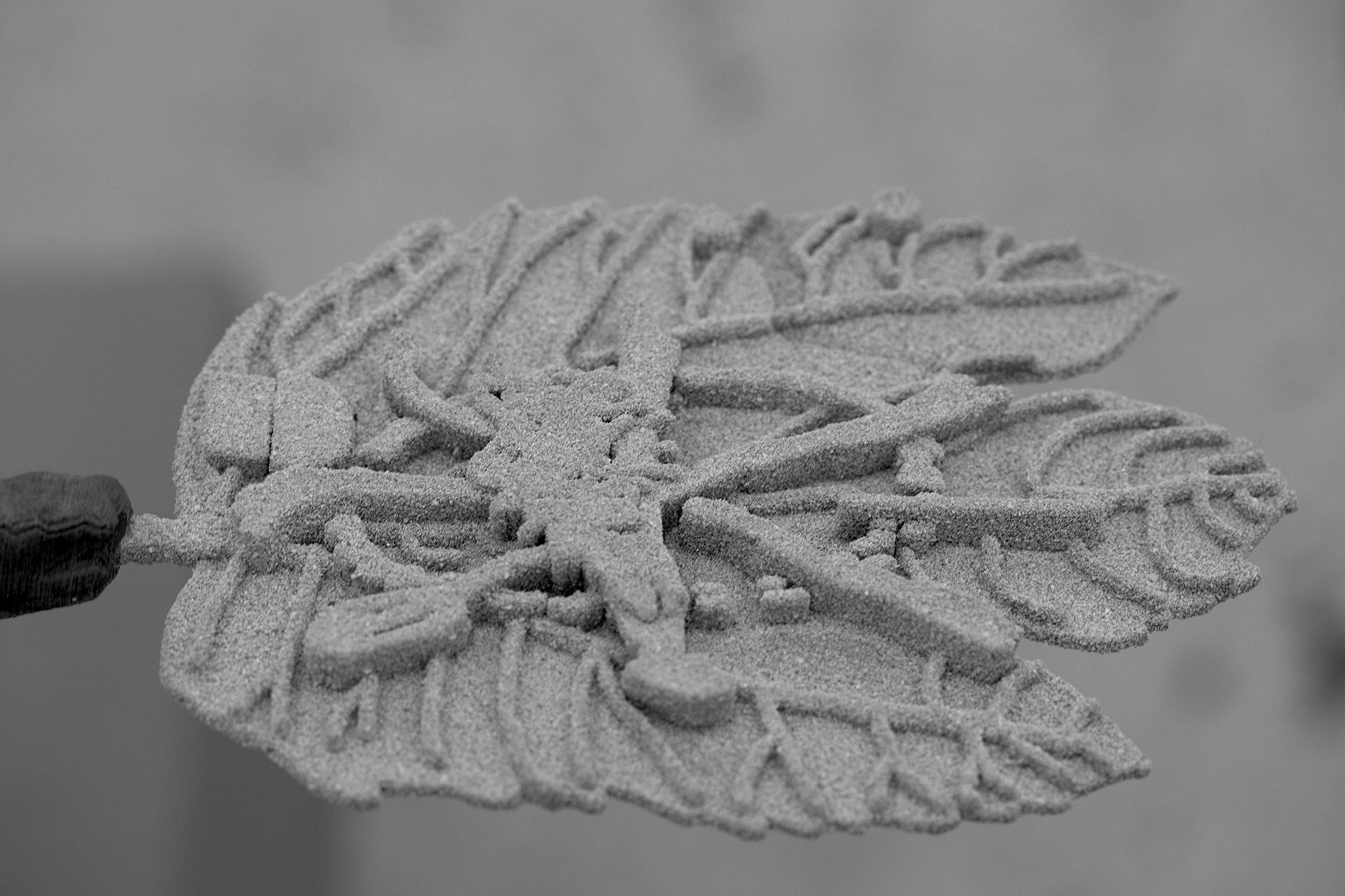
Under the fluorescent gallery lights, the chlorophyll of each leaf has been drained to reveal a crusty truth. Encrypted on each leaf are the overlapping histories of time and place, brand logos, numbers, scribbles and pictures, pulled and pushed as if distortion is the only way to conceal their secrets. Their round edges suggest that these are variations of fig leaves, deformed to breed a new species of fig, one that is altered by its placement in the gallery. Pale pink, beige and grey leaves click into place at the end of each branch. Some face towards me, while others are turned up and curled down. A few leaves rest on the floor, shedding in time for Melbourne’s winter. After examining one leaf in particular, I realise I cannot decode the objects, as Caspar has constructed a language through which to read the work as a whole. Enlaced with voyages into family history, the ode is the most vital part in Anonymous Tree. Prioritising subtle homages over representation is key to understanding what the show wants to tell us. This brings us back to the myths and legends surrounding sculpture in ancient Greece. As Wincklemann believes, “connoisseurs and imitators find not only nature at its most beautiful but also something beyond nature, namely certain ideal forms of its beauty, which… come from images created by the mind alone.” With works such as Bernini’s Apollo and Daphne (1622-1625), the interpretation of Ovid’s Metamorphoses in which Daphne turns into a laurel tree is gracefully captured by Bernini mid-movement. With the changing of seasons, Caspar’s work also transforms to reveal the skeletal underlay of trees.
❦❦❦
Anonymous Tree reminds me of the primal use of human hands. While Caspar has previously used sand casting to create moulds and bake forms, the introduction of 3D modelling and printing allowed him to extend his primal sculpting fingers to the inside of the computer screen. The gritted coating on each leaf mimics half buried archaeological digs, warped and melted overtime after centuries of hot and cold changes. Concealed underground, Caspar resurfaces these antiquities to decorate the tree. He then decorates the decorations themselves, glueing shiny jewels and trinkets onto the sandy leaves. The trunk is constructed out of stacked logs, each one harbouring its own story. Erected proudly, every blocked section of the trunk is dipped in an image, with some resembling bark and others fabricated patterns, again designed to ornate the tree. These multilayered skins are formulaic to Caspar’s language - they are reproducible, same as the 3D models - but the precarious restrictions of sand casting reveal the unique ways an object can manifest.
This tree is one addition to a long lasting practice of Caspar’s, where he considers his position in the world, in his family, across the seas and locally. Anonymous Tree represents a timestamp of process-
based sculpture, practised socially. There is a strong inclination towards the noble grandeur of this upright shape, and most importantly, the inconclusive findings of the tree's markings. Anonymity, as the title proposes, touches on the mode of concealment and variations of texture throughout this show. The choice of textual permanence, just like object permanence and the feeling of something that isn’t present, is used to focus on the form of the tree. The muscle memory of a root system encapsulates the simple traditions of sculpture. With my face lost in the canopy, I experience crown shyness amongst Anonymous Tree.
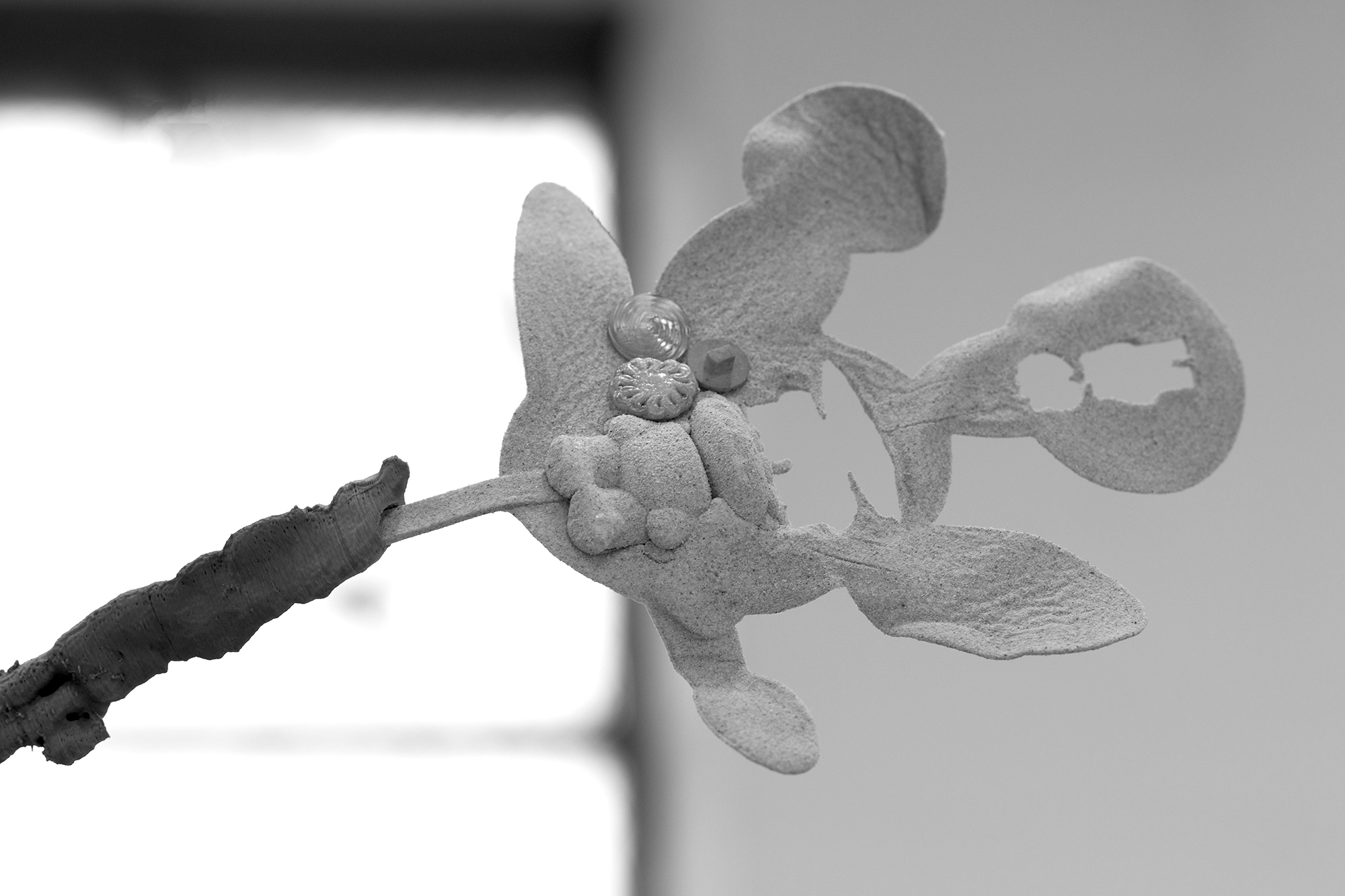
MARGARITA KONTEV is a Melbourne-based writer, emerging curator and early-career researcher. She co-founded the artist-run gallery Wethouse, and since 2018 has contributed to the local art scene with frequent exhibition reviews, complimentary exhibition texts and artistic projects.
Edited by Juliette Berkeley.
Documentation by Raisa Mclean.
This piece was commissioned in response to Caspar Connolly’s exhibition Anonymous Tree, as part of TCB’s 2024 Emerging Writers’ Program.
The TCB Emerging Writers’ Program is generously supported by the City of Merri-Bek.
 .
. 
